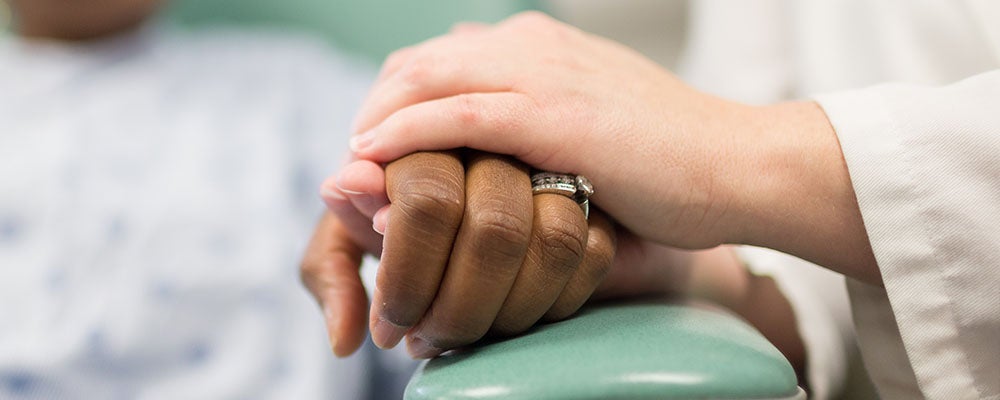Reconstruction Options
Breast reconstruction is a type of surgery that aims to restore the look and feel of your breasts after a mastectomy. Breast reconstruction is a personal decision. You should research you reconstructive options and decide if and when it is right for you.
Or, you may decide that you don't want another surgery, or that you don’t need it because you feel comfortable with your appearance. If you decide against reconstruction, you may opt to wear a breast prosthesis.
When to Have Reconstruction
Breast reconstruction can be done during your surgery or even up to years later. Immediate reconstruction allows you to have fewer surgeries. But if you decide that now isn't the time, you can always change your mind anytime in your life and have the surgery when you're ready.
Reconstruction Options
There are two main types of breast reconstruction. Talk with your plastic surgeon to determine which option is right for you.
Reconstruction with Implants and Tissue Expanders
The tissue expander is like a water balloon that is temporarily placed under the chest muscle and breast skin after your mastectomy. It is expanded with saline as much as possible during the operation — but the amount of skin left after your mastectomy limits full expansion. Patients usually stay in the hospital 1 to 2 days.
After you recover from this operation, you will follow up in the plastic surgeon’s office to have the tissue expander filled with more saline to gradually stretch the expander to its full size. This will help your body create new skin and muscle to cover the expander and create a full-sized breast.
The amount of time it takes to fill the expander depends on how large a breast is being made and how much fluid you can tolerate being put into your expander each time. With each fill, you will feel a tightness under the muscle as the expander gets larger. The entire filling process usually takes about 1 to 4 months.
The tissue expander is then exchanged for a permanent breast implant in a short outpatient procedure.
Flap Reconstruction
Flap reconstruction transfers skin, muscles, and fat from your back, buttocks, or abdominal area to reconstruct your breast. There are different types of flap reconstruction depending on the area used. In general, flap procedures are more involved surgeries than implant reconstructions.
Flap reconstruction has certain risks involving establishing blood supply to the reconstructed area. There can be pain and changes in range of motion and strength in the area used for the flap. Because your own tissues are used, it may result in a breast that appears and feels more natural. Most flap procedures can avoid the use of an implant.
There are three main types of flap reconstruction:
This type of procedure transfers a “flap” of your lower abdominal skin, fat, and muscles up to the breast area for shaping and reconstructing a new breast. With this procedure, you may notice a softer, more natural-looking breast than implants can give. However, you also may notice a weakness in your abdominal wall. Be sure to keep this in mind when deciding between implant or flap reconstructions.
The plastic surgeon must be careful to preserve nerve and blood vessels during this 3- to 4-hour surgery. You will be in the hospital 3 to 4 days for careful observation of your flap. There will be an incision below your navel across your lower abdominal area like a C-section scar but a bit longer. Some women see this as an added benefit because they are getting a “tummy tuck,” too.
During your stay in the hospital, your nurses will keep your room extra warm to help ensure that your newly constructed breast and flap will have a good blood supply.
This reconstructive procedure is similar to the TRAM, except your abdominal muscle is not used. This surgery requires the expertise of a microsurgeon who connects tiny blood vessels under a microscope to give the flap a new blood supply. This surgery takes 6 to 12 hours, and the hospital stay and recovery are similar to the TRAM Flap — although the free flap carries a somewhat higher risk of complications.
This flap uses the tissue from your upper back to create a new breast. Because the amount of available tissue is often not enough to create a full breast, an implant is usually used as well.
Nipple Reconstruction
This outpatient procedure can be done 3 to 6 months after your first surgery. The plastic surgeon creates a three-dimensional nipple using the tissue on your breast. The areola (the dark part around your nipple) is created using a skin graft or a tattoo.

